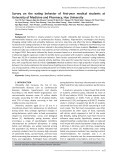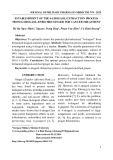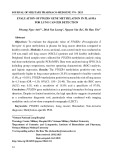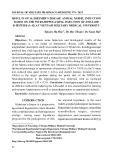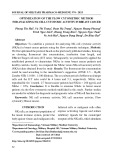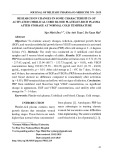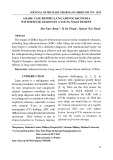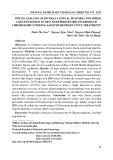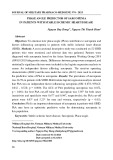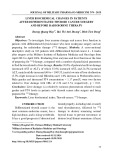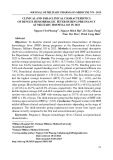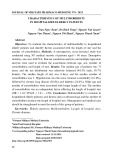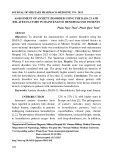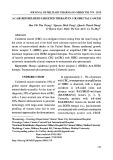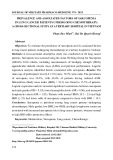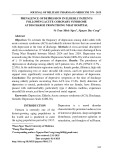
JOURNAL OF MILITARY PHARMACO-MEDICINE N04 - 2025
154
PREVALENCE AND ASSOCIATED FACTORS OF
VERTEBRAL COMPRESSION FRACTURE
AMONG OLDER WOMEN WITH OSTEOPOROSIS
Truong Tri Khoa1,2, Nguyen Thanh Huan1,3*
Nguyen Van Tan1,3, Nguyen Duc Cong3,4
Abstract
Objectives: To investigate the prevalence and associated factors of vertebral
compression fracture (VCF) in older women with osteoporosis. Methods: A cross-
sectional study was conducted on 279 older women with osteoporosis at the
Rheumatology and Neurosurgery Department and Rheumatology Clinic,
University Medical Center, from August 2022 to May 2023. Results: 102/279
older women (36.6%) had at least one vertebral fracture, and more than 50% of
participants were symptomatic. In the adjusted logistic regression, physical
activity (OR: 0.44; 95%CI: 0.20 - 0.94; p = 0.038), osteoarthritis (OR: 0.24;
95%CI: 0.12 - 0.48; p < 0.001), frailty (OR: 7.41; 95%CI: 3.45 - 16.73; p < 0.001),
falls (OR: 3.86; 95%CI: 1.68 - 9.32; p = 0.002), T-score at femoral neck (OR: 0.63;
95%CI: 0.41 - 0.92; p = 0.002) were associated with vertebral fracture.
Conclusion: The prevalence of VCF was quite high among older women with
osteoporosis, highlighting a disease burden in this population. Physical activity,
osteoarthritis, and higher T-score at the femoral neck decreased the odds of VCF,
while frailty and falls increased the odds of VCF.
Keywords: Vertebral fracture; Osteoporosis; Aged; Women.
1Department of Geriatrics and Gerontology, University of Medicine and Pharmacy
2Hoan My Sai Gon Hospital
3Thong Nhat Hospital
4Department of Geriatrics and Gerontology, Pham Ngoc Thach University of Medicine
*Corresponding author: Nguyen Thanh Huan (huannguyen@ump.edu.vn)
Date received: 23/3/2025
Date accepted: 02/4/2025
http://doi.org/10.56535/jmpm.v50i4.1270





